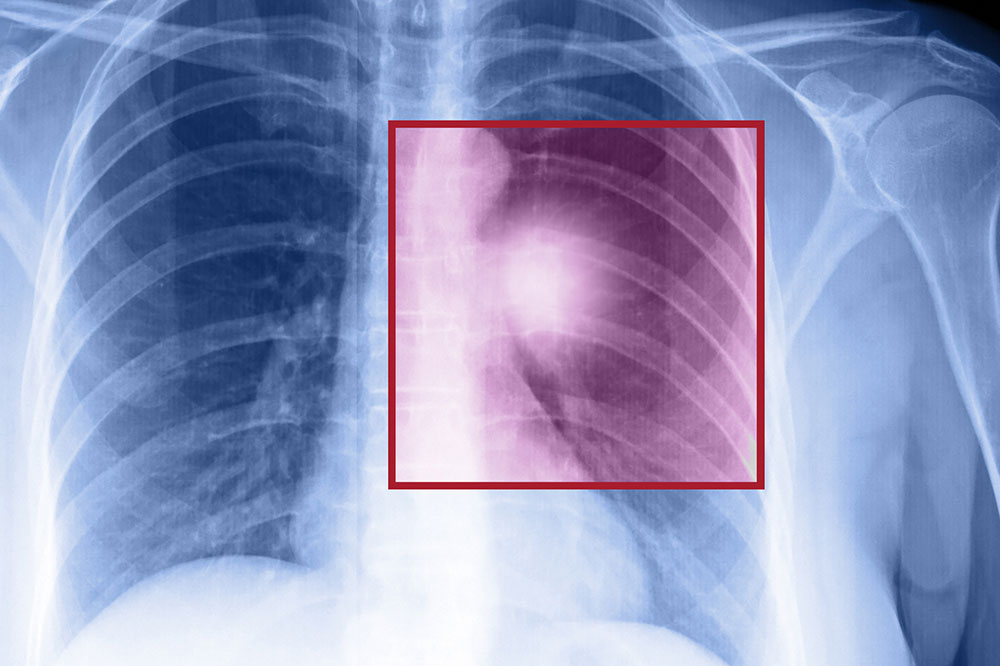Comprehensive Guide to Recognizing and Understanding Thyroid Cancer: Symptoms, Types, and Early Detection
This comprehensive article explores thyroid cancer, covering early symptoms, various types, and the importance of early detection. It provides in-depth insights into signs like neck lumps, voice changes, and lymph node swelling, along with detailed descriptions of each cancer variant. Recognizing early warning signs and understanding the disease can significantly improve treatment outcomes. Regular check-ups and prompt medical consultation are emphasized as essential for effective management of thyroid malignancies, aiming to enhance awareness and encourage timely intervention.

Comprehensive Guide to Recognizing and Understanding Thyroid Cancer: Symptoms, Types, and Early Detection
Thyroid cancer is an increasingly recognized health concern worldwide, with an estimated 53,000 new cases diagnosed each year. The disease originates from the thyroid gland, a small, butterfly-shaped organ located at the front of the neck that plays a vital role in hormone production and regulation. The thyroid influences metabolic processes, energy levels, and overall body functions. Early detection of thyroid cancer is essential for effective treatment and improved prognosis. This comprehensive article explores the key symptoms, various types of thyroid cancer, and the importance of prompt medical consultation to ensure early diagnosis.
Understanding the Thyroid Gland The thyroid gland, situated at the base of the neck, is crucial for maintaining hormonal balance. It produces thyroid hormones that regulate basal metabolic rate, heart function, digestive health, muscle control, brain development, and maintenance of bones. Although the gland is small—about the size of a ping-pong ball—it has significant influence over multiple bodily systems. Fortunately, thyroid issues, including cancer, are relatively rare, but awareness is vital for early intervention.
Signs and Symptoms of Thyroid Cancer The initial stages of thyroid cancer often present with subtle signs that can easily be overlooked. Many individuals remain asymptomatic in the early phase, which is why regular health check-ups and awareness of warning signs are crucial. Here are some primary symptoms to watch out for:
Palpable Neck Lump or Swelling: One of the most common early indicators is the presence of a lump or swelling in the neck region, especially in the area near the Adam’s apple. These lumps may be felt during self-examination or physical checkups. Typically, these lumps are painless and firm, but if they are tender, painful, or enlarging rapidly, immediate medical consultation is advised. The lump often does not cause discomfort initially, making it easy to ignore, but detection early can significantly improve treatment success.
Changes in Voice and Hoarseness: Sudden or persistent hoarseness, a husky voice, or difficulty speaking can signal thyroid abnormalities, including cancer. These voice changes tend to develop gradually and can interfere with speech and breathing as the tumor progresses. If voice changes last longer than a few weeks, a detailed evaluation by an ENT specialist and endocrinologist is recommended.
Enlarged or Firm Lymph Nodes: Swelling of cervical lymph nodes is a crucial sign of potential metastasis or spread of thyroid cancer. Persistent lymphadenopathy, especially in the neck, warrants further investigation, as it often indicates a response to malignant activity in the thyroid or nearby tissues.
Chronic or Persistent Cough: An ongoing cough that cannot be attributed to common cold, allergies, or respiratory infections might be a sign of thyroid enlargement pressing on the trachea or respiratory pathways. Such a cough often persists or worsens over time.
Unexplained Fatigue and Weakness: Feeling unusually tired, lethargic, or experiencing muscle weakness without a clear reason can be associated with systemic effects of cancer, including thyroid malignancies. If these symptoms persist despite adequate rest and lifestyle changes, medical screening should be sought.
Additional Symptoms to Monitor Beyond the primary signs, patients should be alert to other symptoms indicating potential thyroid issues:
Difficulty Breathing: Gland enlargement or tumor growth putting pressure on the trachea can cause shortness of breath or respiratory discomfort.
Difficulty Swallowing (Dysphagia): An enlarged thyroid or tumor can exert pressure on the esophagus, leading to swallowing difficulties or a choking sensation.
Persistent Neck Discomfort or Pain: Discomfort starting at the base of the neck and radiating to the ears or head, especially if persistent, might signify tumor growth or inflammation.
Types and Variants of Thyroid Cancer Recognizing the different types of thyroid cancer helps inform prognosis and treatment options. The disease manifests in several primary variants, each with unique characteristics, growth patterns, and treatment responses.
Papillary Thyroid Cancer: Accounting for approximately 80% of all cases, papillary thyroid cancer is the most common and least aggressive form. It tends to grow slowly and remains localized or metastasizes to nearby lymph nodes. The prognosis is excellent with appropriate treatment, and the 10-year survival rate exceeds 90%.
Follicular Carcinoma: Making up about 10% of cases, this type is somewhat more aggressive than papillary cancer. It can spread hematogenously (through the bloodstream) to distant organs such as the lungs and bones. Early diagnosis and treatment significantly improve outcomes, and it is generally curable.
Medullary Thyroid Cancer: Constituting around 4% of thyroid cancers, medullary thyroid carcinomas arise from parafollicular C cells that produce calcitonin. Elevated calcitonin levels in the blood help in both diagnosis and monitoring. This cancer often has a hereditary component and is associated with genetic syndromes like Multiple Endocrine Neoplasia type 2 (MEN2).
Anaplastic Thyroid Cancer: Representing approximately 2% of cases, anaplastic thyroid cancer is highly aggressive and fast-growing. It typically affects older patients and often presents with rapid tumor expansion, pressure symptoms, and invasion into surrounding tissues. The prognosis remains poor, with a high mortality rate.
Hurthle Cell Carcinoma: An uncommon subtype of follicular carcinoma, Hurthle cell cancer accounts for about 3% of cases. It is characterized by the presence of oncocytic cells with abundant granular cytoplasm and tends to be more resistant to radioactive iodine therapy.
Despite the fact that over 90% of thyroid nodules are benign, awareness of these signs and variants is crucial. Early medical intervention, including biopsy and imaging, can lead to successful management and improve survival rates. Regular health screenings and prompt attention to suspicious symptoms play a vital role in combating thyroid cancer effectively.





